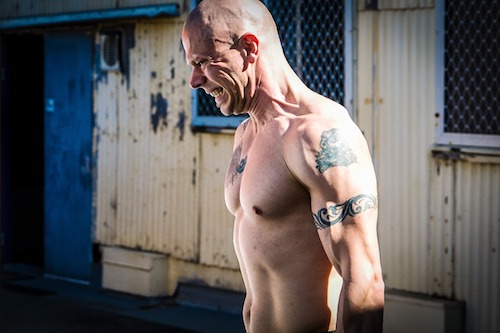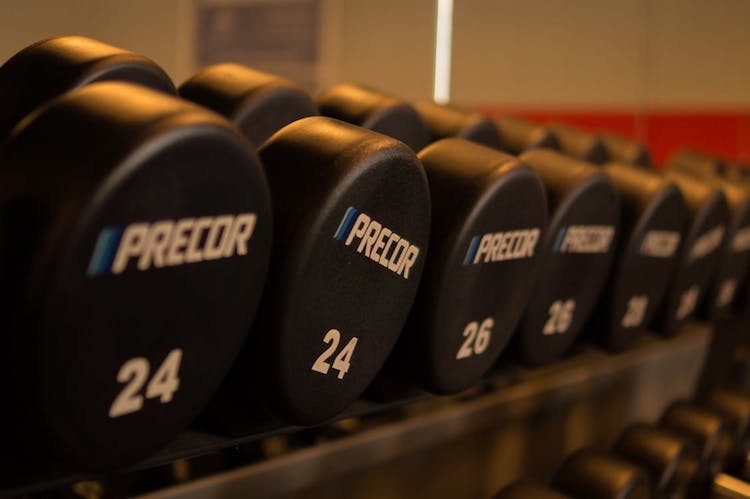Top Tips for Keeping Your Back Healthy
Low back pain – It’s not a glamorous topic, to be sure, and most young guys don’t need to worry too much about it. That said, it IS something EVERY lifter should think about, even early on in their careers! Even if you feel great now, years of heavy lifting will eventually catch up to you.
Just think about those old timers at your own gym who are constantly complaining about their aches and pains, telling old stories of what they used to be able to do (supposedly). If you don’t start putting some thought into injury prevention, you will end up just like them!
Fortunately, you’re by no means doomed to a life of low back pain after lifting for a decade or more. You’ll probably have some minor aches and pains eventually, but if you follow a few preventive measures, you can keep your spine healthy enough to lift for the rest of your life. A little bit of effort and forethought in the present will prevent all sorts of time-consuming, costly problems in the future! Here are my top tips for keeping your back healthy.
Perfect Your Technique
Your back – particularly your lower back – is going to take the biggest beating from squats, deadlifts and other heavy lower body movements. By far the best thing you can do to reduce wear, tear and injuries is to perfect your technique on these movements! You can do rep after rep, set after set with excellent technique, and your muscles – not your joints – will take most of the force (and grow!). But even one set with bad form can set you back for months and increase your risk of further injury.
Every movement has its ideal form, but in general, you need to learn to keep your lower and upper back neutral (flat). A slight arch in your lower back is also helpful, but severe extension is unnecessary and even dangerous. Competitive lifters will sometimes round their backs a bit to move more weight, but if you’re training for growth, that’s not going to do anything to help you.
Check Your Ego

That brings us to the next most important point – not lifting too much weight! You need to get stronger to get bigger, and progressive overload is the best way to pack on size, but compromising your form is dangerous and unproductive. If you add 20 pounds to your 5-rep deadlift max – but only by rounding the hell out of your lower back – did you really get any stronger? No! In fact, maintaining strict form during each workout will protect your back AND let you know that your muscles are doing the work.
Build Your Glutes

It’s no coincidence that most guys with bad backs also have weak glutes. In both squats and deadlifts, activating your glutes first in the movement allows them to do a great deal of the work and take a big load off of your spine. Just play around with this the next time you’re deadlifting. No matter how light you have to go, make sure you feel your glutes firing on every rep, and make your hips move FORWARD – not up – from the beginning of the movement. This will take some practice if you’re not used to activating your glutes, but getting this right early on will pay massive dividends in strength and longevity in the future.
Focus on Recovery

We usually think of recovery in terms of muscular growth and repair, but it’s just as important for your joints and connective tissues. Just think what would happen if you tried to bench press every day! Your pecs would be sore, sure – but so would your shoulders! Even if you tried to maintain great form, you would sooner than later develop some serious pain and stiffness in your shoulders, and you might even tear a rotator cuff.
The same idea applies to your back, but don’t use this as an excuse to squat or train legs less often. You should be able to train legs and back week in and week out, just like every other body part. But if you’re prone to back problems, and you let your nutrition, hydration and sleep slide, your back will be the first place you feel it! Your spine needs rest to recover from heavy loading, and the muscles that support it will only repair and get stronger if you do everything in your power to recover.
Avoid What Hurts

While specific variations of squats and deadlifts are often touted as the kings of mass-building, you can’t get big if you’re injured! Ultimately, you’ve got to do what works for your body.
Now, this is NOT an excuse to avoid squats and deads altogether! Don’t be that guy who bench presses with f***ed up shoulders every week, but whose “bad knees” prevent him from training legs…ever. Chances are, you will be able to find some variation of each of these movements that works well for you. Long legs and shaky knees? A low bar squat to parallel will probably be better than a high bar, ass-to-grass squat. Super long torso? Sumo and stiff-leg deadlifts might feel better on your back than conventional. If the form that everybody else is using doesn’t work well for you – even with “perfect” technique – try something new.
Schedule Downtime

Sometimes, just taking a rest day or eating more doesn’t cut it. If you’re training hard enough to change your body, you’re going to need to give it a longer break every once in a while. The term “deload” has become trendy nowadays, but we’re basically talking about a down week here. You’ll want to do this once every couple of months, as it gives your body a chance to fully repair the muscles, joints and connective tissues that are in a constant state of fatigue with all-out training. You’ll also get a nice mental break and be more than ready to hit it hard the next week!
During your down week, you’ll still go to the gym with the same frequency as usual, and you’ll probably perform the same exercises as always. The main thing you need to change is your training volume – the total amount of work you do. I usually recommend clients cut their volume in half during a down week. So, if you normally do 4 work sets of squats (after warm-ups), then cut that down to 2. If you’re feeling particularly beat up, cut the weight by 20-30 percent, and just get some solid reps in.
Know When to Play It Safe

Last but not least, know that you can’t win every battle. Muscle growth is a years-long process, and your long-term progress will be better served by NOT pushing through on the days when your back and other joints are giving you hell. Still, you don’t need to turn an otherwise great session into an off day if your back is the only thing that’s bothering you. If you head in to train back or legs and feel a twinge in your spine, switch up your exercises. Leg presses, leg curls, extensions, seated rows, machine work – there are plenty of options for getting some leg and back work in without taxing your lower back.











